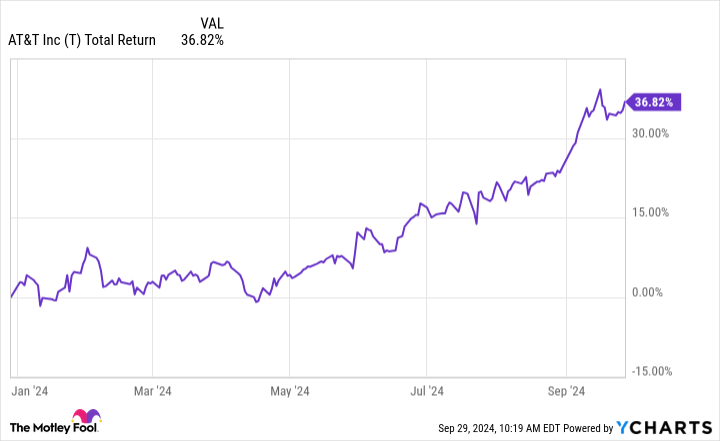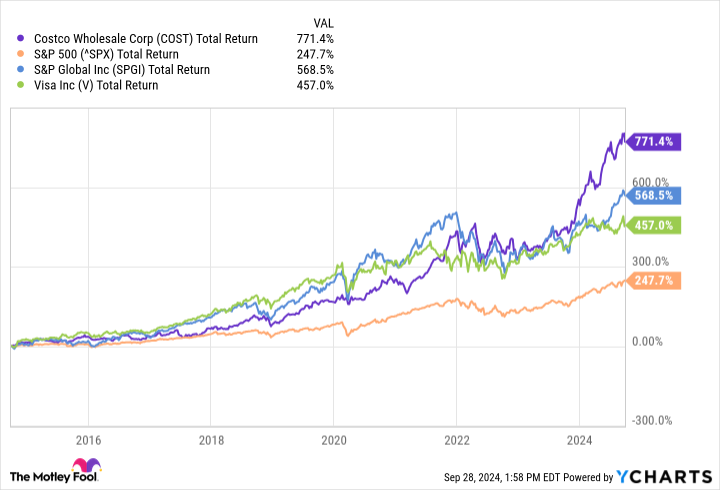Dividend stocks offer a path to steady passive income, but not all are created equal. The key to long-term success lies in dividend sustainability, not just high current yields.
The payout ratio serves as a critical tool for assessing sustainability. This metric, representing the percentage of earnings distributed as dividends, reveals a company’s ability to maintain and grow its dividend. A conservative ratio below 50% typically signals strength and room for growth, while ratios above 75% can indicate that a dividend is at risk.

Context matters when evaluating payout ratios. Pharmaceutical companies often exhibit exceptionally high ratios because of their cyclical nature. Real Estate Investment Trusts (REITs) must distribute 90% of taxable income as dividends, naturally elevating their ratios.
Armed with this primer, the following 15 dividend stocks emerge as some of the best plays for passive income. Their yields, payout ratios, and other key factors signal the potential for sustainable returns over the long haul. Here’s a nuts-and-bolts overview of these top-tier dividend payers.
Dividend powerhouses
Johnson & Johnson (NYSE: JNJ) and Coca-Cola (NYSE: KO) stand out thanks to their decades of consistent increases in their dividend programs. J&J offers a 3.07% yield and a 72.70% payout ratio. The company’s diverse healthcare portfolio also provides stability and above-average growth potential.
Coca-Cola stock pays a 2.7% yield with a 76.80% payout ratio. Its iconic brand and global distribution network create a wide economic moat, an important buffer against potential dividend cuts.
Retail giants
Target (NYSE: TGT) and Lowe’s (NYSE: LOW) represent strong retail dividend options. Target pays a decent 2.89% yield with a conservative 45.50% payout ratio. The company’s omnichannel strategy and exclusive brands drive customer loyalty.
Lowe’s, for its part, offers a 1.72% yield and a highly conservative 36.7% payout ratio. Its entrenched position in the home improvement market provides consistent cash flow and ample growth opportunities.
Consumer staples leaders
PepsiCo (NASDAQ: PEP) and Costco (NASDAQ: COST) offer stability in the consumer staples sector. PepsiCo stock yields 3.19% with a 74.50% payout ratio. Its diverse snack and beverage portfolio provides resilience during economic downturns and shocks.
Costco’s 0.52% yield and 26.30% payout ratio may seem low, but the company’s consistent dividend growth and special dividends enhance shareholder returns. To wit, Costco’s stock has trounced the benchmark S&P 500 over the prior 10-year period (more on this below).
Pharmaceutical giants
AbbVie (NYSE: ABBV) and Pfizer (NYSE: PFE) illustrate the pharmaceutical industry’s distinctive dividend landscape. AbbVie’s 3.18% yield and 202% payout ratio reflect its post-Humira transition, with newer immunology drugs gaining traction to support its substantial dividend.
Pfizer, offering a 5.78% yield and a 443% payout ratio, exemplifies the industry’s cyclical nature. Despite current challenges, Pfizer’s history of dividend growth and shareholder commitment suggests its high yield will persist through this trough period.
Financial services innovators
Visa (NYSE: V) and S&P Global (NYSE: SPGI) represent financial services stocks with significant room for dividend growth. Visa’s 0.76% yield and 21.50% payout ratio reflect its focus on reinvestment for expansion in an age defined by an ongoing shift to digital payments.
S&P Global offers a 0.71% yield and 34.3% payout ratio. The company is a leader in credit ratings, benchmarks, and analytics. Thanks to its wide moat in most of these areas, S&P Global has been able to boost its payouts for 51 consecutive years.
Dividend yield leaders
Altria (NYSE: MO) and AT&T (NYSE: T) stand out with their impressive yields. Altria boasts a 7.99% yield and a 67.50% payout ratio. Despite declining smoking rates, the tobacco giant has historically offset volume drops with price hikes, suggesting dividend stability for now.
AT&T offers a 5.07% yield with a 63.70% payout ratio. Following a strategic restructuring, the telecom company has strengthened its core business. While AT&T’s stock has rallied this year, it remains attractively valued at 9.6 times forward earnings, potentially cushioning against economic headwinds.
Industrial and real estate options
Grainger (NYSE: GWW) and Realty Income (NYSE: O) stand out in the industrial and real estate arenas. Grainger’s 0.79% yield and 20.9% payout ratio reflect its focus on impressive growth in the areas of maintenance, repair, and operations. Realty Income offers a 5.04% yield with a 285.9% payout ratio. Its triple-net lease model provides a stable income for shareholders.
International exposure
Philip Morris International (NYSE: PM) brings international exposure to this dividend portfolio, offering a 4.48% yield and 92% payout ratio. Its worldwide tobacco and reduced-risk product lineup provides steady growth prospects and stability for income-focused investors.
Despite the elevated payout ratio, Philip Morris has consistently increased its dividend annually since its 2008 spinoff, with an impressive 7% compound annual growth rate. This track record suggests the tobacco giant’s substantial dividend remains dependable for the foreseeable future.
Performance comparison
Over the past decade, many of these dividend stalwarts have outperformed the S&P 500. Visa, S&P Global, and Costco have delivered particularly strong total returns:
However, some high-yield options like AT&T have lagged the broader market, highlighting the importance of focusing on dividend growth potential rather than current yield alone.
Key takeaways
This diverse group of 15 dividend stocks offers investors a range of options for building a portfolio focused on lifelong passive income. By prioritizing sustainable payouts, consistent growth, and strong competitive positions, these companies provide a solid foundation for long-term wealth accumulation through dividends.
Where to invest $1,000 right now
When our analyst team has a stock tip, it can pay to listen. After all, Stock Advisor’s total average return is 773% — a market-crushing outperformance compared to 168% for the S&P 500.*
They just revealed what they believe are the 10 best stocks for investors to buy right now…
*Stock Advisor returns as of September 23, 2024
George Budwell has positions in AT&T, AbbVie, Costco Wholesale, PepsiCo, Pfizer, Philip Morris International, Realty Income, Target, and Visa. The Motley Fool has positions in and recommends AbbVie, Costco Wholesale, Pfizer, Realty Income, S&P Global, Target, and Visa. The Motley Fool recommends Johnson & Johnson, Lowe’s Companies, and Philip Morris International. The Motley Fool has a disclosure policy.
15 Best Dividend Stocks for Lifelong Passive Income was originally published by The Motley Fool


